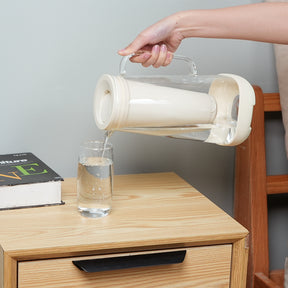Transform Your Water Experience: Discover the Secret to Pure Refreshment!
Access to clean and safe drinking water is essential for maintaining good health and overall well-being. Unfortunately, many households rely on tap water that may contain various contaminants such as bacteria, heavy metals, chlorine, and sediment. These impurities not only affect the taste and odor of the water but can also pose significant health risks. This is where domestic water purifiers come into play. By investing in a reliable water purifier, you can ensure that your family has access to pure, refreshing water every day. The benefits of having a water purifier go beyond just taste; they include improved health, reduced risk of waterborne diseases, and peace of mind knowing that your drinking water is safe.

Understanding Domestic Water Purifiers
A domestic water purifier is a device designed to remove impurities from drinking water, making it safe and palatable. There are several types of water purifiers available on the market, each employing different technologies to achieve purification. One of the most common types is the reverse osmosis (RO) purifier, which uses a semi-permeable membrane to filter out contaminants, including dissolved salts and heavy metals. Another popular choice is the activated carbon filter, which effectively removes chlorine, sediment, and volatile organic compounds (VOCs) through adsorption. UV purifiers, on the other hand, use ultraviolet light to kill bacteria and viruses, providing an additional layer of protection. Understanding the specific contaminants prevalent in your local water supply can help you choose the right type of purifier that meets your needs.
Choosing the Right Water Purifier for Your Home
Selecting the right water purifier for your home involves considering several key factors. First, assess the quality of your local water supply. Testing your tap water can help identify the specific contaminants present, allowing you to choose a purifier that effectively addresses those issues. Additionally, consider your household size and daily water consumption. Larger families may require purifiers with higher flow rates or larger storage capacities. Lastly, budget plays a significant role in your decision. While it’s essential to invest in a quality purifier, there are various options available at different price points. It’s also wise to factor in the long-term costs associated with filter replacements and maintenance when making your choice. Gathering insights from friends who have already made similar purchases can provide valuable perspectives on the best options available.
Installation Process for Water Purifiers
The installation process for a domestic water purifier can vary depending on the type and model you choose. Generally, it involves a few essential steps and tools. Most purifiers require basic plumbing knowledge, and you'll likely need tools such as a wrench, screwdriver, and Teflon tape. The installation typically begins with turning off the water supply and draining the faucet. You will then need to install the faucet adapter and connect the purifier to the water line. While some homeowners opt for a DIY installation to save costs, hiring a professional can ensure that the setup is done correctly and efficiently. Professional installation may come with added costs, but it can save you time and potential headaches down the line if you’re unfamiliar with plumbing tasks.
Maintenance Tips for Long-lasting Performance
Additionally, keep your water purifier functioning optimally by implementing proper maintenance practices. Regular cleaning is essential to ensure the longevity of your system. Depending on the type of purifier you have, maintenance may require periodic filter replacements and cleaning schedules. Most manufacturers provide guidelines on how often to replace filters, usually every six months to a year, depending on usage and water quality. When you stay on top of maintenance, you can enjoy pure, safe drinking water for years to come.
Enhancing Your Family's Water Quality
In conclusion, investing in a domestic water purifier is a pivotal step towards ensuring the safety and quality of your drinking water. From understanding the various types of purifiers to selecting the right one for your household needs, every step plays a crucial role in enhancing your water experience. Moreover, proper installation and regular maintenance are key to preserving the performance of your water purifier. By taking action to improve your water quality, you are prioritizing your health and well-being. So, take that essential step today—invest in a water purifier, and enjoy the peace of mind that comes with knowing your family is drinking pure, refreshing water.








